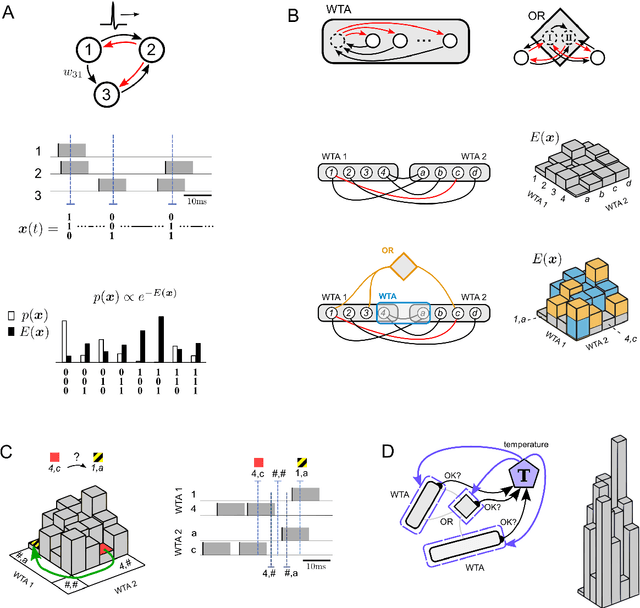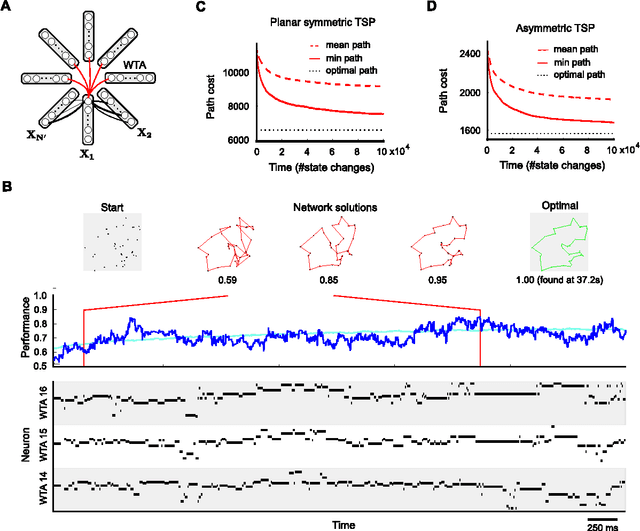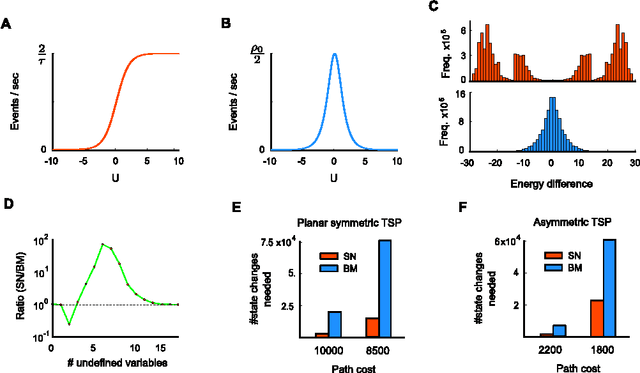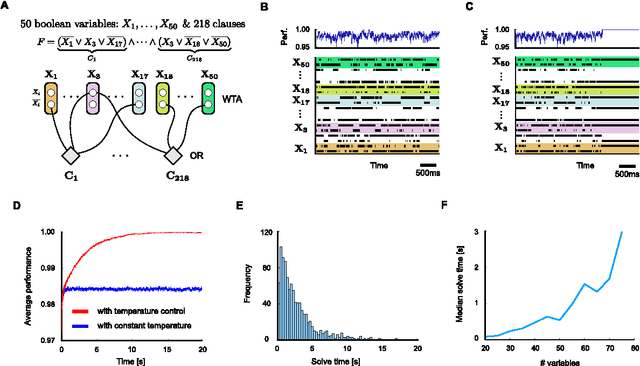A theoretical basis for efficient computations with noisy spiking neurons
Paper and Code
Dec 18, 2014



Network of neurons in the brain apply - unlike processors in our current generation of computer hardware - an event-based processing strategy, where short pulses (spikes) are emitted sparsely by neurons to signal the occurrence of an event at a particular point in time. Such spike-based computations promise to be substantially more power-efficient than traditional clocked processing schemes. However it turned out to be surprisingly difficult to design networks of spiking neurons that are able to carry out demanding computations. We present here a new theoretical framework for organizing computations of networks of spiking neurons. In particular, we show that a suitable design enables them to solve hard constraint satisfaction problems from the domains of planning - optimization and verification - logical inference. The underlying design principles employ noise as a computational resource. Nevertheless the timing of spikes (rather than just spike rates) plays an essential role in the resulting computations. Furthermore, one can demonstrate for the Traveling Salesman Problem a surprising computational advantage of networks of spiking neurons compared with traditional artificial neural networks and Gibbs sampling. The identification of such advantage has been a well-known open problem.
 Add to Chrome
Add to Chrome Add to Firefox
Add to Firefox Add to Edge
Add to Edge